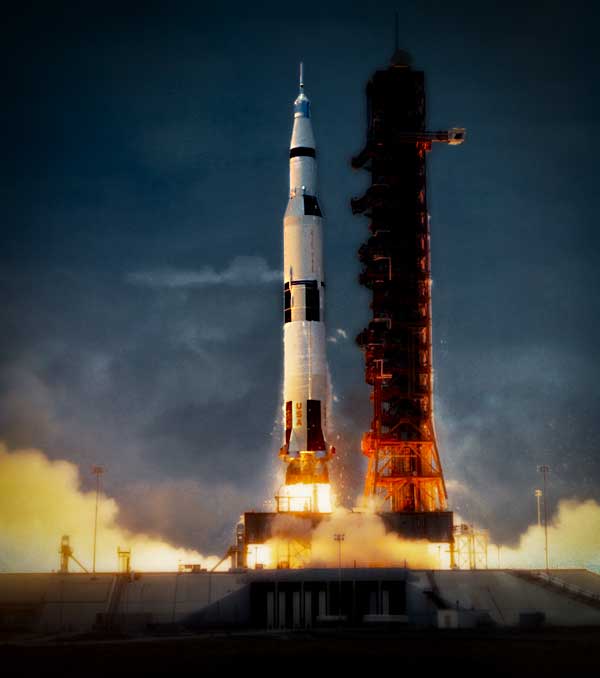
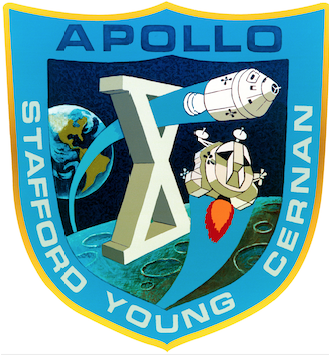 18 May 1969: At 16:49:00 UTC, Apollo 10 Saturn V AS-505 lifted off from Launch Complex 39B at the Kennedy Space Center, Cape Canaveral, Florida, on a full dress rehearsal for the landing on the Moon that would follow with Apollo 11, two months later. On board were Colonel Thomas P. Stafford, U.S. Air Force, Mission Commander, on his third space flight; Commander John W. Young, U.S. Navy, Command Module Pilot, also on his third mission; and Commander Eugene A. Cernan, U.S. Navy, Lunar Module Pilot, on his second space flight. This was the first Apollo mission in which all three flight crew members had previous space flight experience.
18 May 1969: At 16:49:00 UTC, Apollo 10 Saturn V AS-505 lifted off from Launch Complex 39B at the Kennedy Space Center, Cape Canaveral, Florida, on a full dress rehearsal for the landing on the Moon that would follow with Apollo 11, two months later. On board were Colonel Thomas P. Stafford, U.S. Air Force, Mission Commander, on his third space flight; Commander John W. Young, U.S. Navy, Command Module Pilot, also on his third mission; and Commander Eugene A. Cernan, U.S. Navy, Lunar Module Pilot, on his second space flight. This was the first Apollo mission in which all three flight crew members had previous space flight experience.
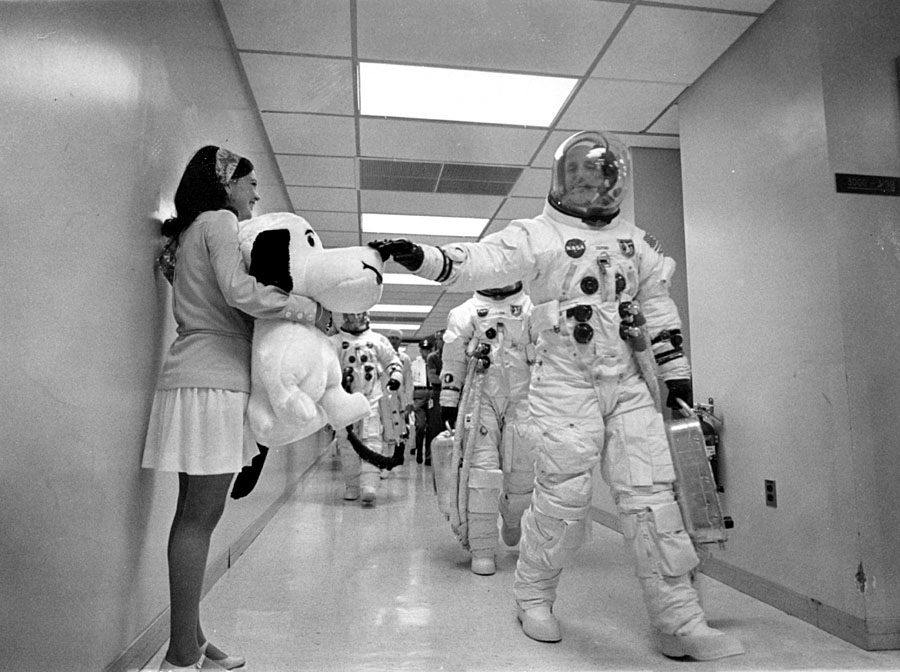
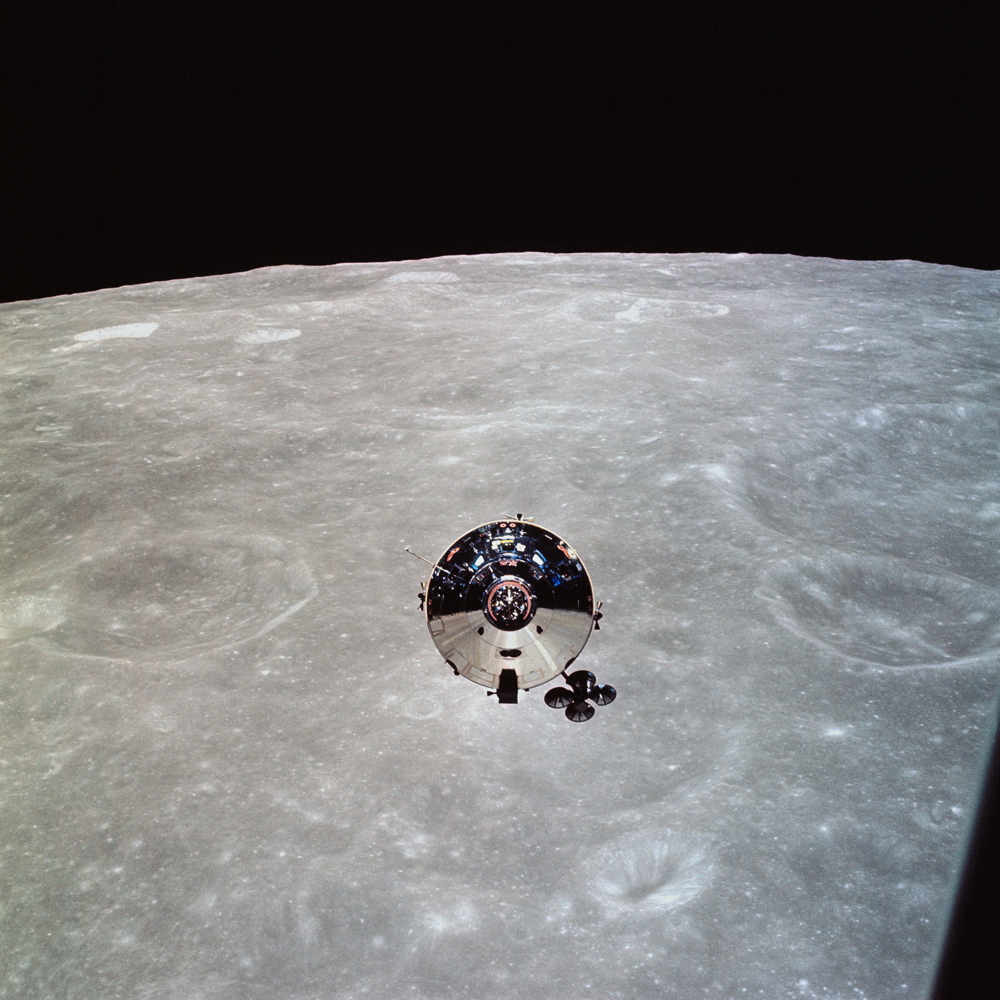
During the Apollo 10 mission, everything except an actual landing was done. The Lunar Module separated from the Command Service Module in lunar orbit and descended to within 47,400 feet (14,447.5 meters) of the surface. The CSM and LM were in lunar orbit for 2 days, 13 hours, 37 minutes, 23 seconds before returning to Earth. During the return, the CSM reached a maximum speed of 24,791 miles per hour (39,897 kilometers per hour).
At T+192:03:23 (16:52:25 UTC, 26 May) the Apollo capsule and the three astronauts splashed down in the Pacific Ocean 400 miles (643.7 kilometers) east of American Samoa. The duration of the mission was 8 days, 3 minutes, 23 seconds.
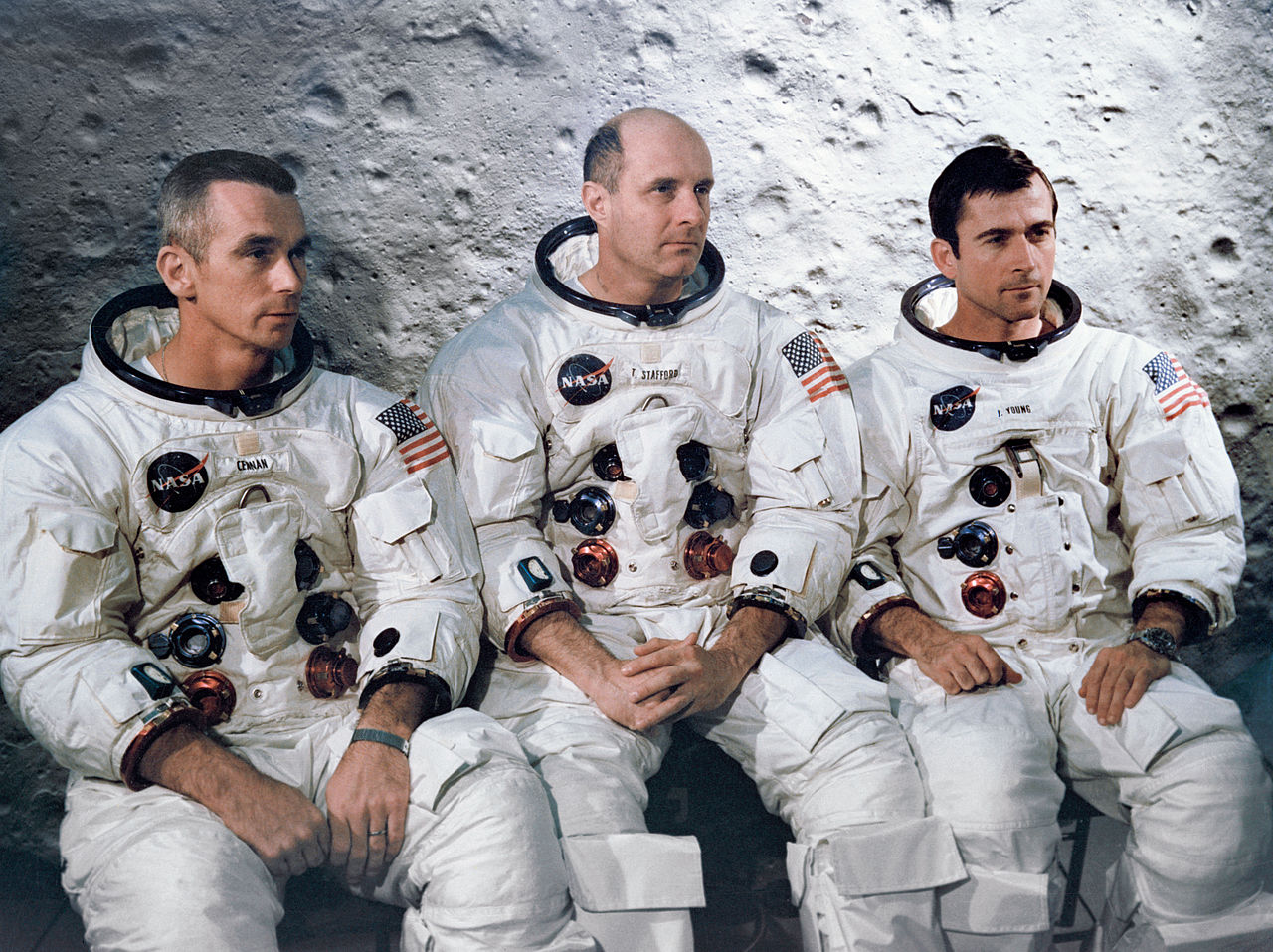
© 2017, Bryan R. Swopes
John Young is a ‘Pilot’s pilot’.
Easily one of my favorite Astronauts – F9F Panther and F-8 Crusader pilot.
Test pilot – evaluating the XF8U-3 Crusader III and F-4 Phantom II.
Astronaut- 2 Gemini missions, 2 Apollo missions (walked on the moon), and Flew 2 Shuttle missions (piloted the maiden flight! STS-1). He was the Chief of the Astronauts office at NASA for 13 years.
Charles Bolden ( a combat A-6 Pilot, Navy Test Pilot, 4-time shuttle astronaut, and NASA Administrator) said, “Hoot Gibson and John Young were two guys that to this day continue to boggle my imagination in terms of their piloting ability. I’ve met a lot of people in my life in aviation, over thirty-five years; never met two people like them. Everybody else gets in an airplane; John and Hoot wear their airplane. They’re just awesome.”
John Watts Young is certainly not as well known as the earlier astronauts, but in terms of accomplishments,in my view, is one of the greatest of them.
Thanks, Bruce. I had to verify my facts, and that’s never a bad thing. I appreciate it when readers catch me with a mistake—something that happens more often than I would like.